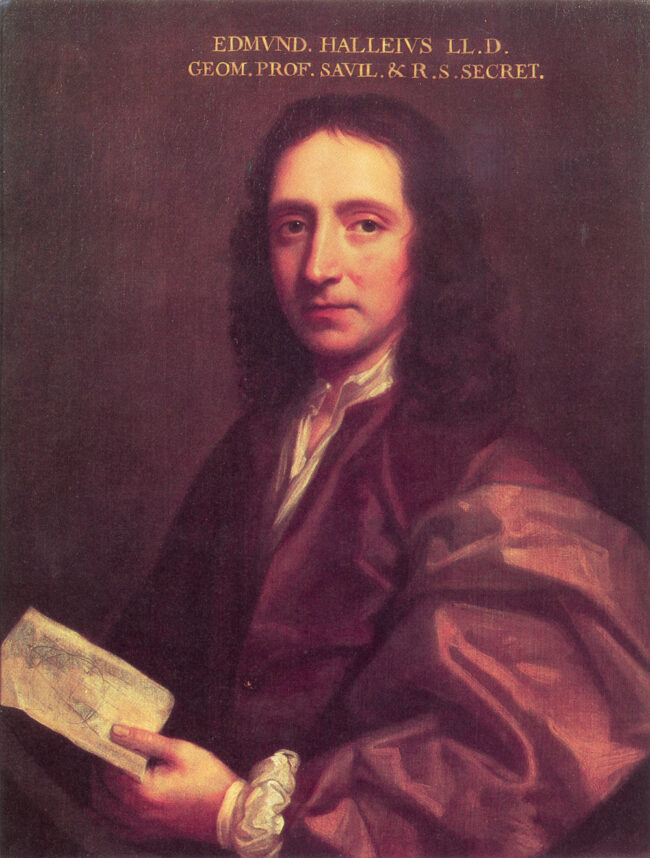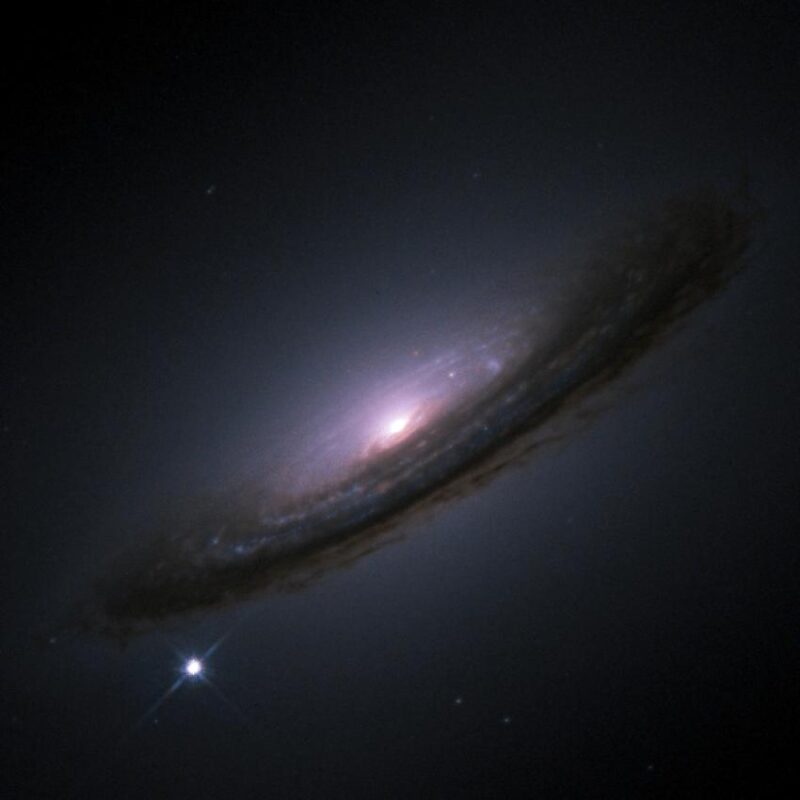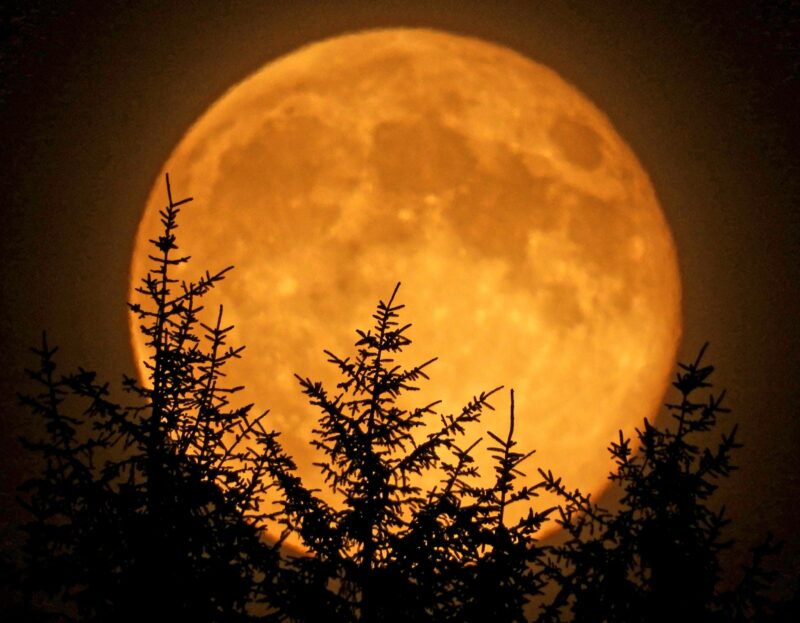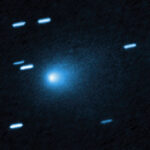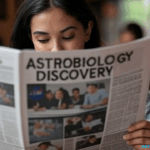Now Reading: Hubble’s closest look at a quasar reveals … weirdness
-
01
Hubble’s closest look at a quasar reveals … weirdness
Hubble’s closest look at a quasar reveals … weirdness
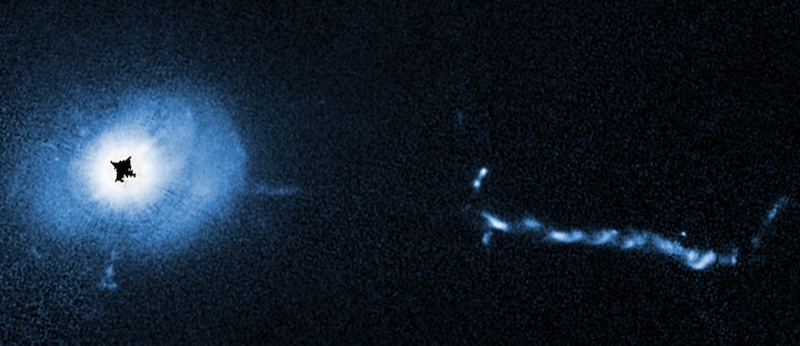

- Quasars are intensely bright objects in the centers of distant young galaxies. Supermassive black holes power them. Despite being billions of light-years away, their blinding light obscures other details when viewed in telescopes.
- NASA’s Hubble Space Telescope has now taken the closest look yet at a quasar. It is one of the closest quasars, at 2.5 billion light-years from Earth.
- The new images reveal ‘weird things’ such as blobs and filaments near the quasar. One filament in particular is shaped like a giant L.
Close look at a quasar reveals weirdness
Quasars are extremely bright objects in the centers of young galaxies. They are powered by supermassive black holes. Astronomers know of about a million of them now. Being incredibly far away, however, quasars still just look like pinpoints of light. But on December 5, 2024, NASA shared the Hubble Space Telescope’s closest-ever look at a quasar. The new images reveal a lot of “weird things,” including L-shaped filaments and blobs of various sizes.
Hubble took the closest look yet at the first known quasar.
Called 3C 273, this quasar is a brightly glowing galactic center powered by a black hole consuming material.
This helped astronomers open up a new gateway into better understanding quasars: https://t.co/16gBOXtWU5 pic.twitter.com/zvmWCWCWFo
— Hubble (@NASAHubble) December 5, 2024
Closest-ever look at a quasar
Quasars are powerful, emitting thousands of times as much energy as all the stars in a galaxy. However, they are so far away that they still just look like pinpoints of light in telescopes. That’s why astronomers refer to them as quasi-stellar objects. But if you could travel to a quasar, you would see the center of the young galaxy glowing intensely bright. Quasars are powered by supermassive black holes at the centers of these galaxies. They glow brightly as the black holes consume material in the region.
Now, Hubble has taken a new and closer look at a quasar called 3C 273. Astronomer Maarten Schmidt first discovered it in 1963. It is an incredible 2.5 billion light-years from Earth. So, what did Hubble see?
The astronomers said the new views showed a lot of “weird things.” Bin Ren of the Côte d’Azur Observatory and Université Côte d’Azur in Nice, France, said:
We’ve got a few blobs of different sizes, and a mysterious L-shaped filamentary structure. This is all within 16,000 light-years of the black hole.
 ” /> Here are 2 views of quasar 3C 273 from Hubble. In the bottom image, a coronagraph blocks out the central glare from the middle of the quasar. By doing this, astronomers can see many more fine details. Image via NASA/ ESA/ Bin Ren (Université Côte d’Azur/ CNRS)/ Hubblesite.
” /> Here are 2 views of quasar 3C 273 from Hubble. In the bottom image, a coronagraph blocks out the central glare from the middle of the quasar. By doing this, astronomers can see many more fine details. Image via NASA/ ESA/ Bin Ren (Université Côte d’Azur/ CNRS)/ Hubblesite.Hints of an active environment
Hubble showed hints of significant activity around quasars as early as 1994. The galaxies that hosted the quasars and black holes would collide with other nearby galaxies. As a result, the debris would then fall back onto the black holes, giving them more energy. The black holes, in turn, then continue to power the quasars. So there is a lot of activity around quasars.
Like staring into blinding headlights
Despite the immense distances to quasars, when Hubble looked at 3C 273, it was like staring into the blinding headlights of a car. Indeed, that makes it difficult to see any surrounding details in images.
So Hubble used its Space Telescope Imaging Spectrograph (STIS) instrument as a coronagraph to block out the main glare coming from the quasar. As a result, astronomers could see details eight times closer to the central black hole than previously. And this helped them see details they couldn’t before.

Blobs, filaments and jets
The new images revealed just how complex the region around the quasar is.
The researchers saw filaments and blobs around the quasar and black hole. The long L-shaped filament may be the result of small galaxies being devoured by the central supermassive black hole in the galaxy where the quasar resides.
In addition, the observations also provided a better look at a 300,000-light-year-long extragalactic jet of material coming from the quasar. The researchers compared the new images to older ones from Hubble and determined that material in the jet moves faster when it is farther away from the quasar.
As Ren said:
With the fine spatial structures and jet motion, Hubble bridged a gap between the small-scale radio interferometry and large-scale optical imaging observations, and thus we can take an observational step towards a more complete understanding of quasar host morphology. Our previous view was very limited, but Hubble is allowing us to understand the complicated quasar morphology and galactic interactions in detail. In the future, looking further at 3C 273 in infrared light with the James Webb Space Telescope might give us more clues.
More quasars in the early universe
The approximately 1 million known quasars sounds like a lot, and it is. But astronomers say there used to be even more of them earlier in the lifetime of the universe, about 3 billion years ago. At that time, there were more collisions occurring between galaxies. Astronomers also now know that some quasars merged together in the early universe, as early as 900 million years after the Big Bang.
Bottom line: NASA’s Hubble Space Telescope has taken the closest-ever look at a distant quasar. The new images reveal complex blobs and filaments around the quasar.
Read more: 1st pair of merging quasars seen at Cosmic Dawn
Read more: Do galaxy collisions power quasars? Will our Milky Way become a quasar?
The post Hubble’s closest look at a quasar reveals … weirdness first appeared on EarthSky.
Stay Informed With the Latest & Most Important News
Previous Post
Next Post
-
 012024 in Review: Highlights from NASA in Silicon Valley
012024 in Review: Highlights from NASA in Silicon Valley -
 02Panasonic Leica Summilux DG 15mm f/1.7 ASPH review
02Panasonic Leica Summilux DG 15mm f/1.7 ASPH review -
 03How New NASA, India Earth Satellite NISAR Will See Earth
03How New NASA, India Earth Satellite NISAR Will See Earth -
 04And Thus Begins A New Year For Life On Earth
04And Thus Begins A New Year For Life On Earth -
 05Astronomy Activation Ambassadors: A New Era
05Astronomy Activation Ambassadors: A New Era -
06SpaceX launch surge helps set new global launch record in 2024
-
 07Space Force plans new ‘Futures Command’ amid pressure to speed up modernization
07Space Force plans new ‘Futures Command’ amid pressure to speed up modernization












